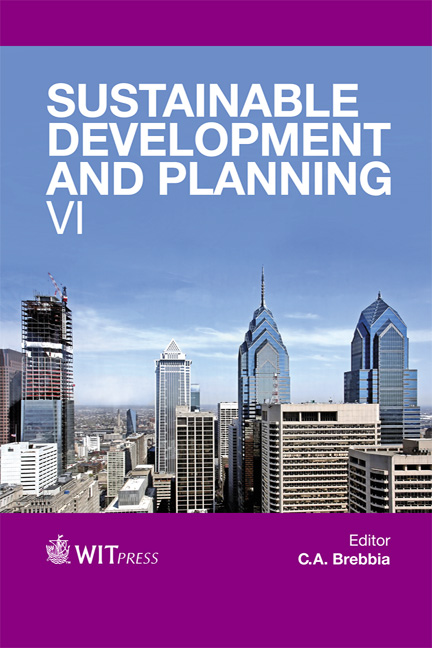Concept Of An Ecologically Balanced Area Based On Ecological Footprint
Price
Free (open access)
Transaction
Volume
173
Pages
8
Page Range
79 - 86
Published
2013
Size
499 kb
Paper DOI
10.2495/SDP130071
Copyright
WIT Press
Author(s)
H. Chen, S. Ise, M. Taniguchi
Abstract
As environmental problems increase on a global scale, a framework must be established to achieve environmental balance. Because the power of local governments is rising as a result of decentralization in Japan, local governments must shoulder the responsibility of dealing with environmental consumption within a region and set up a suitable system for an area. This study examines an ecologically balanced area based on the balance of environmental productivity and consumption capacity. Using a case study approach examining Ibaraki prefecture in Japan, which has been influenced strongly by Tokyo because of its location in the national capital region, it is possible to explain how the concept promotes understanding of ecological productivity and consumption. The study evaluated the Ecological Footprint (EF) of all 44 municipalities in Ibaraki prefecture and connected municipalities with a high environmental load with a low environmental load as one area. To the lower one, the higher one pays for its obligation for environmental management. Results of a case study demonstrated a method to let the designed areas manage their environment voluntarily and to promote local production for local consumption through interregional cooperation. This concept used in environmental planning will improve the ecological balance. The conclusions show that most municipalities in Ibaraki prefecture are not ecologically balanced and that the environmental consumption of the area is influenced by the positional relation with Tokyo metropolitan district. The median value of environmental load excess ratio of all municipalities was designed as a reduction goal in ecologically balanced areas. Consequently, the 44 municipalities in Ibaraki prefecture were formed into 11 areas, with four municipalities left without matching with the others.
Keywords
Ecological Footprint, ecologically balanced area, urban planning





